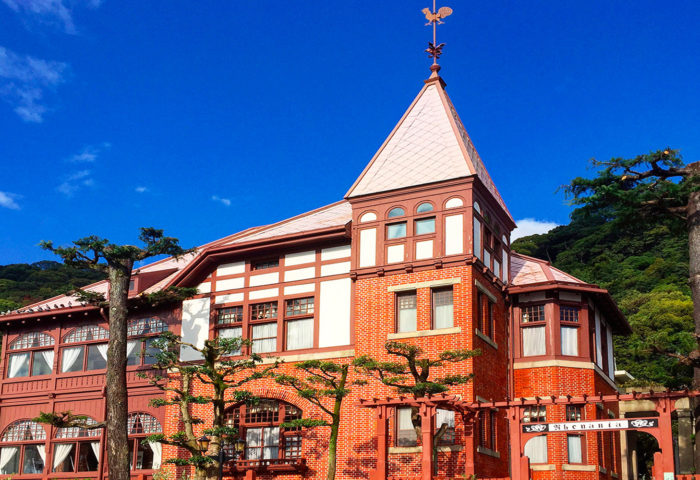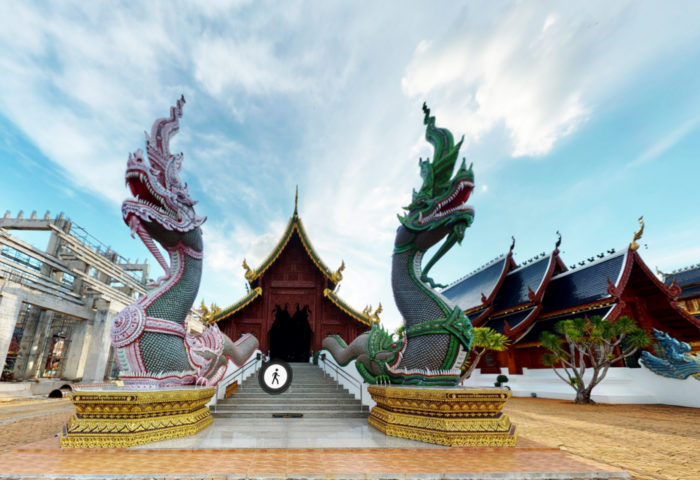Phiman Chakri Hall
- Leave First Review
- 2021
Details
The main palace buildings are actually a group of two to three story buildings linked by open walkways which give the complex the appearance of a single monolithic facade. The central building of the group is the Phiman Chakri Throne Hall. The building features a round turret at one corner, capped by a steep red conical roof.
The ground floor is surrounded by open corridors, with a grand staircase in the rear leading up to the royal apartments on the second floor. The large central room on the second floor was used as a throne hall, although photographs from the time make it appear to be more like a fancy Western styled parlor. The room is also decorated in a very Western style, with a fireplace at the back and elaborate decoration of the corniced ceiling.
The main entry to the Phiman Chakri Throne Hall is covered by a solid roof which extends from the second floor level to a sort of carriage house that has variously been a waiting room, a billiard room, and now serves as a coffee shop.
The room to the west of the throne hall was once the queen’s bedchamber and is now used for teaching Thai classical music. The round room in the turret was a study. Now it’s something of a shrine to the late queen.
The building to the west of the Phiman Chakri Throne Hall, with its own squarish tower, is the Srisuthiniwat building. It was the reception and residence hall for the female members of the royal family, who at the time were still largely segregated from the male members and servants.
Behind the palace building was a large garden. In Rama V’s time, this was where the experimental farm was located. Rama VI built the ‘Roman Garden’ immediately behind the residence. Further back he had a model city called ‘Dusit Thani’ built to help train people how a city should be run.
The model city is gone but a shrine to Thao Hiranphanasoon remains and is quite popular with employees and visitors to the grounds. The shrine is surrounded by ancient banyan trees on one side. On the other side of the shrine is a small modern open sala housing a rather unique Buddha statue. The statue depicts a seated Buddha encased to his shoulders by a five-headed cobra.
When Rama VI passed away in 1925, the palace was for a time turned into a hotel serving foreign dignitaries on state visits as well as businessmen. Then for a time it housed a radio station. After the 1932 revolution which ended the absolute monarchy, like many royal residences the property was confiscated by the army, which turned the old palace into a hospital, now called the Phramongkutklao Hospital (King Mongkut Hospital).
Source: http://bangkokforvisitors.com/palaces/payathai/index.html



Reviews for Phiman Chakri Hall